Odlewanie aluminium to czynność spotykana w przemyśle, warsztatach, a nawet w domu przez tych, którzy są biegli w tym hobby. Aluminium jest odporne na korozję, łatwe do formowania i lekkie. Kwalifikuje go to jako ulubiony składnik większości produktów, czy to części samochodowych, czy przyborów kuchennych. Proces ten jest wielozadaniowy. Może tworzyć małe, szczegółowe lub duże, wytrzymałe części. Jest powszechnie stosowany do produkcji takich przedmiotów jak bloki silnika, części maszyn, naczynia kuchenne i przedmioty dekoracyjne. Istnieją różne opcje technik odlewania; obejmują one odlewanie piaskowe, matrycowe i inwestycyjne. Obie mają swoje zalety, w zależności od projektu.
Odlewanie aluminium jest również powszechne wśród hobbystów. Można to robić w małych warsztatach, a nawet w domowych odlewniach przy użyciu minimalnej ilości narzędzi, wiedzy i sprzętu ochronnego. Podczas pracy ze stopionym metalem należy jednak mieć się na baczności. Sprzęt ochronny, przygotowanie środowiska pracy i bezpieczna obsługa są niezbędne, aby zachować bezpieczeństwo i osiągnąć dobre wyniki. Zdobycie tej umiejętności otwiera drzwi do kreatywnych działań i praktycznych zastosowań.
W tym przewodniku omówimy mechanizm działania odlew aluminiowyTechniki, które można zastosować, a także środki bezpieczeństwa, które można podjąć.
Czym jest odlew aluminiowy?
Odlewane aluminium to aluminium w postaci uzyskanej przez wylanie stopionego metalu do formy i pozostawienie go do stwardnienia. Kształt jest pusty, a pożądany obiekt znajduje się w formie. Po zestaleniu się stopionego aluminium przyjmuje ono kształt. Procedura ta nazywana jest odlewaniem.
Zastosowanie odlewanego aluminium jest tak powszechne, ponieważ jest ono wytrzymałe, lekkie i nie koroduje. Można z niego formować zarówno skomplikowane, jak i proste kształty. Znane produkty to części samochodowe, naczynia kuchenne, elementy maszyn i ozdoby. Odlew aluminiowy to kolejny materiał, który jest przyjazny dla środowiska, ponieważ można go poddać recyklingowi.
Ważne cechy odlewów aluminiowych
- Lekki -Pojemnik jest łatwy w obsłudze i transporcie.
- Dobry stosunek wytrzymałości do wagi -Doskonała wytrzymałość przy niewielkiej wadze.
- Nie rdzewieje -Nie rdzewieje nawet pod wpływem wilgoci.
- Doskonała przewodność cieplna -Transportuje ciepło z wysoką wydajnością, dlatego nadaje się do naczyń kuchennych i elementów silnika.
- Dobra tolerancja wymiarowa -Potrafi tworzyć dokładne i złożone kształty.
- Nietoksyczny -Bezpieczny w zastosowaniach związanych z żywnością, jeśli jest odpowiednio wykończony.
- Nadające się do recyklingu -Może zostać przetworzony w nowy obiekt poprzez stopienie i dlatego nie jest marnowany.
- Elastyczny w użyciu -Można go używać w samochodach, lotnictwie, gospodarstwie domowym i przemyśle.
- Dobre wykończenie -cmogą być polerowane, malowane lub powlekane, aby wyglądały ładniej.
- Trwałość- ma długą żywotność; wymagany jest minimalny serwis.
Dlaczego aluminium jest dobrym metalem odlewniczym?
Odlewanie aluminium jest bardzo popularne. Jest ono zarówno wytrzymałe, jak i lekkie oraz odporne na korozję. Dzięki temu znajduje zastosowanie w wielu branżach. Główną zaletą jest lekkość. Aluminiowe komponenty są lekkie i mogą przyczynić się do zmniejszenia całkowitej masy maszyn i samochodów. Pomaga to w zwiększeniu zużycia paliwa w samochodach i samolotach.
Jest ono również wysoce odporne na korozję. Aluminium jest naturalnie pokryte cienką powłoką tlenku, co zapobiega rdzewieniu. Oznacza to również, że odlewane części przetrwają dłużej, nie wspominając o warunkach zewnętrznych lub morskich. Aluminium łatwo się topi i można je łatwo odlewać. Jego niska temperatura topnienia, w porównaniu do wielu innych metali, pozwala zaoszczędzić energię podczas produkcji.
Kolejną zaletą jest wszechstronność. Proste lub niezwykle skomplikowane projekty z drobnymi detalami mogą być odlewane z aluminium. Można go również w znacznym stopniu poddać recyklingowi. Złom aluminiowy może być przetapiany i ponownie wykorzystywany bez wpływu na jakość. Powoduje to, że jest to obecnie zrównoważona opcja w produkcji przemysłowej. Wreszcie, aluminium jest dobrym przewodnikiem cieplnym i elektrycznym, a jako taki jest odpowiednim materiałem stosowanym w częściach silnika, radiatorach i naczyniach kuchennych.
Metoda odlewania aluminium
Istnieją różne sposoby odlewania aluminium. Każda technika ma swój własny zestaw zalet w zależności od wymaganego rozmiaru, kształtu i liczby części.
1. Odlewanie w piasku
Odlewanie odbywa się poprzez odlewanie piaskowe, jedną z najstarszych technik odlewania aluminium. Wykorzystuje ona specjalny piasek odlewniczy, który jest wytwarzany w formie wokół wzoru. Wnęka jest wypełniana stopionym aluminium i pozostawiana do ostygnięcia. Forma piaskowa jest odłamywana, gdy część jest solidna. Technika ta jest niedroga i nadaje się do dużych lub małych elementów.
2. Odlewanie ciśnieniowe
Odlewanie ciśnieniowe to połączenie wtryskiwania pod wysokim ciśnieniem stopionego aluminium do stalowych bloków. Takie formy mogą być ponownie wykorzystane i zapewniają gładkie powierzchnie i precyzyjne wymiary kompletnych części. Jest szybki i może być stosowany w nadwyżkach produkcyjnych. Technika ta ma szerokie zastosowanie w produkcji samochodów, urządzeń i elektroniki.
3. Odlewanie inwestycyjne
Podczas odlewania inwestycyjnego jest on początkowo przygotowywany do użycia wzoru woskowego. Nakładana jest na niego ceramika w celu wykonania formy. Wosk jest następnie topiony, po czym wlewane jest roztopione aluminium. Proces ten pozwala na tworzenie bardzo szczegółowych i skomplikowanych form. Jest stosowany w komponentach lotniczych, sprzęcie medycznym i małych komponentach przemysłowych.
4. Stałe odlewanie form
Odlewanie w formach stałych wymaga solidnych form wykonanych z metalu i może być wykorzystywane wielokrotnie. Takie formy pozwalają na uzyskanie części o lepszym wykończeniu powierzchni i zwiększonej wytrzymałości w porównaniu do odlewania piaskowego. Ta metoda produkcji jest odpowiednia w sytuacjach o średniej i wysokiej wartości produkcji, w których wymagana jest spójność.
5. Środki ostrożności
Podczas odlewania aluminium uzyskuje się wysokie temperatury. W przypadku niewłaściwego obchodzenia się ze stopionym aluminium może dojść do jego zapłonu, a nawet wybuchu, powodując poważne oparzenia i pożary. Istnieją przepisy bezpieczeństwa, których należy przestrzegać, aby uniknąć wypadków.
6. Zakładanie sprzętu ochronnego
Zawsze należy nosić żaroodporne rękawice, pełną osłonę twarzy i inne okulary ochronne. Ciężki skórzany fartuch ochronny chroni przed rozpryskami. Należy unikać włókien syntetycznych, które topią się na skórze.
7. Praca w bezpiecznym obszarze
Należy pracować w wentylowanym pomieszczeniu, aby nie wdychać niebezpiecznych oparów. Upewnij się, że nie zagracasz miejsca pracy łatwopalnymi substancjami. W pobliżu powinna znajdować się gaśnica na wypadek pożaru.
8. Odlewanie gorącego metalu
Powoli i płynnie wsunąłem go razem z tyglem. Nigdy nie należy go przepełniać. Stopione aluminium należy dodawać w sposób umiarkowany, aby nie rozpryskiwało się.
9. Trzymać wodę z dala
Woda gwałtownie reaguje ze stopionym aluminium i może spowodować katastrofalne w skutkach eksplozje. Unikaj uruchamiania go bez wysuszenia narzędzi, form i obszaru, w którym będziesz pracować.
10. Prawidłowe użytkowanie pieca
Przed użyciem pieca należy go sprawdzić i upewnić się, że nie jest uszkodzony. Chłodzić i ogrzewać zgodnie z instrukcjami producenta, aby zapobiec awarii sprzętu.
Proces odlewania aluminium
Aluminium można odlewać na wiele sposobów. W tym przypadku przykładem będzie odlewanie w piasku. Jest to metoda tania, łatwa i przyjazna dla początkujących
Krok 1: Przygotowanie formy
Forma maszynowa ze specjalnego piasku odlewniczego. Mocno dociśnij piasek, wywierając nacisk na wybraną część. Wyjmij wzór tak, aby pozostawić czyste wgłębienie.
Krok 2: Roztop aluminium
Umieść złom lub wlewki aluminium w tyglu. Umieść go w piecu, aż stopi się i osiągnie prawie 660 stopni C (1220 stopni F).
Krok 3: Eliminacja zanieczyszczeń
Dodaj topnik do stopionego aluminium, aby wychwycić brud i tlenki. Zlać zanieczyszczenia zebrane z powierzchni.
Krok 4: Wlewanie metalu
Następnie należy podnieść tygiel za pomocą szczypiec. Z dużą ostrożnością wypełnij wnękę formy stopionym aluminium. Przepływ powinien być ciągły, aby nie powodować powstawania kieszeni powietrznych i rozprysków.
Krok 5: Schłodzenie
Pozwól aluminiowemu narzędziu opaść i zestalić się. Rozmiar odlewu i poziom grubości wpływają na czas chłodzenia.
Krok 6: Wyjęcie odlewu
Aby znaleźć część aluminiową, należy odłamać formę piaskową. Pozbądź się nadmiaru piasku i gruboziarnistego papieru ściernego za pomocą narzędzi.
Krok 7: Zakończono
Usunąć nadmiar metalu, wypolerować i/lub obrobić do uzyskania gładkiej powierzchni. Następnie odlew jest gotowy do użycia.
Popularne stopy w odlewnictwie aluminium
Istnieją różne odmiany stopów aluminium, które są szeroko stosowane w odlewnictwie ze względu na różne właściwości, które te stopy mają do różnych zastosowań. Najpopularniejsze z nich są następujące:
- A356 Alloy - Charakteryzuje się najlepszą wytrzymałością po obróbce cieplnej, wysoką odpornością na korozję i spawalnością. Jest to najbardziej uniwersalny materiał w przemyśle motoryzacyjnym i lotniczym.
- .319 Alloy - Doskonale nadaje się do produkcji części silników i części mechanicznych, ponieważ zapewnia dobrą odporność na zużycie i skrawalność.
- 535 Alloy - Znany jako doskonały stop odporny na korozję, w szczególności w przypadku narażenia na działanie elementów występujących w warunkach morskich, i jest idealny do elementów łodzi i obszarów korozyjnych.
- Stopy Al-Si (aluminium-krzem) - Zapewniają dobrą płynność i niską podatność na kurczenie się oraz oferują rozsądną odporność na zużycie i są najczęściej stosowane jako klocki samochodowe.
- Stopy Al-Cu (aluminium-miedź) - Stopy mają bardzo wysoką wytrzymałość i bardzo wysoką twardość, ale nieco niższą odporność na korozję, powszechnie stosowane w przemyśle lotniczym i wojskowym.
Wszystkie stopy są wybierane zgodnie z wymaganiami dotyczącymi wytrzymałości i odporności na korozję, wraz z wymaganiami dotyczącymi skrawalności i łatwości odlewania wymaganymi przez aplikację.
Oto tabela najważniejszych właściwości i zastosowań
Oto tabela 1: kluczowe właściwości i zastosowania
| Nazwa stopu | Główne pierwiastki stopowe | Kluczowe właściwości | Typowe zastosowania |
| A356 | Krzem (6,5-7,5%), magnez (0,25-0,45%) | Doskonała odporność na korozję, dobra spawalność i wysoka wytrzymałość po obróbce cieplnej | Koła samochodowe, komponenty lotnicze i kosmiczne, sprzęt morski |
| 319 | Krzem (5,5-6,5%), miedź (3,0-4,0%), żelazo (maks. 1,0%) | Dobra odporność na korozję, doskonała skrawalność, umiarkowana wytrzymałość | Bloki silnika, głowice cylindrów i obudowy pomp |
| 535 | Magnez (6,5-7,5%), mangan (0,3-0,6%) | Wyjątkowa odporność na korozję, dobra reakcja na anodowanie i niższa wytrzymałość | Sprzęt morski, sprzęt do obsługi chemikaliów |
| A380 | Krzem (7,5-9,5%), miedź (3,0-4,0%), żelazo (maks. 1,3%) | Doskonała szczelność, dobra odporność na zużycie i wysoka wytrzymałość | Obudowy przekładni samochodowych, obudowy elektroniczne i narzędzia ręczne |
| 7075 | Cynk (5,6-6,1%), magnez (2,1-2,5%), miedź (1,2-1,6%) | Bardzo wysoka wytrzymałość, słaba odporność na korozję i trudność odlewania | Konstrukcje lotnicze i kosmiczne, wysokowydajny sprzęt sportowy |
| AlSi10Mg | Krzem (9,0-11,0%), magnez (0,25-0,45%) | Wysoki stosunek wytrzymałości do masy, dobra odporność na zmęczenie, możliwość obróbki cieplnej | Części lotnicze, podwozia samochodowe, komponenty drukowane w 3D |
Oto tabela techniczna właściwości mechanicznych popularnych aluminiowych stopów odlewniczych
Tabela 2 przedstawia właściwości mechaniczne popularnych aluminiowych stopów odlewniczych
| Nazwa stopu | Wytrzymałość na rozciąganie (MPa) | Granica plastyczności (MPa) | Wydłużenie (%) | Twardość (Brinell) | Typowe zastosowania |
| A356 | 230-280 | 130-160 | 3-8 | 75-80 | Koła samochodowe, części lotnicze i kosmiczne, komponenty morskie |
| 319 | 170-230 | 80-120 | 1-3 | 70-80 | Bloki silnika, głowice cylindrów, skrzynie przekładniowe |
| 535 | 170-240 | 70-100 | 10-18 | 65-75 | Osprzęt morski, obudowy pomp i sprzęt dla przemysłu spożywczego |
| 443 | 150-200 | 70-90 | 2-4 | 60-70 | Odlewy ozdobne, oprawy oświetleniowe, elementy dekoracyjne |
| 713 | 240-300 | 150-190 | 1-2 | 80-85 | Wsporniki lotnicze, części konstrukcyjne o wysokiej wytrzymałości |
Korzyści z odlewania aluminium
Odlewanie aluminium jest wysoce pożądanym sposobem przetwarzania produkcji w większości branż, ponieważ ma wiele zalet. Jest wszechstronny, ekonomiczny i funkcjonalny.
Złożone kształty
Odlewy aluminiowe mogą tworzyć zarówno proste, jak i niezwykle skomplikowane odlewy. Umożliwia produkcję detali o drobnym charakterze, które w przeciwnym razie byłyby trudne do osiągnięcia poprzez obróbkę skrawaniem.
Mocny, ale lekki
Aluminium jest wytrzymałe i lekkie. Komponenty odlewane obniżają ogólną wagę maszyn i samochodów bez obniżania ich trwałości.
Odporność na korozję
Odlew aluminiowy jest naturalnie odporny na rdzę i korozję. Dlatego też doskonale sprawdza się w zastosowaniach zewnętrznych, morskich i przemysłowych.
Tania produkcja masowa
Odlewanie aluminium może wiązać się z niewielkim wydatkiem na każdą część i wieloma częściami w przypadku dużej liczby form.
Materiał nadający się do recyklingu
Aluminium może być również wielokrotnie topione i ponownie wykorzystywane bez pogorszenia jakości. Dzięki temu proces ten jest przyjazny dla środowiska.
Dobra przewodność cieplna i elektryczna
Odlewy aluminiowe zapewniają wysoki transfer ciepła, dzięki czemu są przydatne w naczyniach kuchennych, częściach silnika i radiatorach.
Typowe problemy i zapobieganie im
Odlewanie aluminium może stanowić problem nawet dla doświadczonych metalowców. Zapoznanie się z tymi problemami i ich rozwiązaniami pozwoli zaoszczędzić czas i poprawić jakość.
Porowatość
Porowatość to drobne otwory w odlewie. Pojawia się, gdy gaz obecny wewnątrz stopionego metalu zostaje uwięziony. Aby temu zapobiec, należy odpowiednio odgazować aluminium przed odlewaniem oraz używać czystych i suchych form.
Niepełne wypełnienie
Czasami zdarza się, że stopione aluminium nie zajmuje całej wnęki formy. Może to być wynikiem niskiej temperatury zalewania lub złej konstrukcji formy. Należy upewnić się, że metal jest wystarczająco gorący, a forma umożliwia swobodny przepływ.
Surowe wykończenie
Szorstkie lub ziarniste powierzchnie są zwykle spowodowane użyciem gruboziarnistego piasku lub niewłaściwie przygotowanych form. Aby uzyskać gładszy wygląd, należy użyć drobniejszego piasku lub lepszej/wytrzymalszej formy.
Pęknięcia lub wypaczenia
Pęknięcia te mogą pojawić się, gdy odlew zostanie schłodzony zbyt szybko lub nierównomiernie. Odlew należy schładzać powoli i równomiernie, aby nie obciążać metalu.
Wtrącenia metalu
Czasami odlew zatrzymuje brud lub żużel. Zanieczyszczenia powinny być usuwane ze stopionego metalu, a obszar roboczy musi być czysty.
Zastosowania odlewów aluminiowych
Prawie każdy duży przemysł wykorzystuje odlewy aluminiowe. Jest ono wytrzymałe, lekkie i nie ulega łatwo korozji, przez co jest preferowane w przypadku wielu przedmiotów.
Przemysł motoryzacyjny
Aluminium to materiał wykorzystywany do produkcji wielu części samochodowych. Przykładem mogą być bloki silnika, głowice cylindrów, koła i obudowy skrzyń biegów. Komponenty te są ciężkie, a jednocześnie lekkie, co poprawia osiągi samochodu, a nawet zużycie paliwa.
Przemysł lotniczy
Samoloty wymagają lekkich i wytrzymałych materiałów. W samolotach i statkach kosmicznych elementy konstrukcyjne, wsporniki i obudowy są wykonane z odlewanego aluminium.
Produkty gospodarstwa domowego
Elementy dekoracyjne, naczynia kuchenne i części używane do produkcji mebli są w większości odlewane z aluminium. Świetnie przewodzi ciepło, dlatego idealnie nadaje się do garnków i patelni, a także blach do pieczenia.
Elektronika i elektryka
Radiatory, a także obudowy i obudowy sprzętu elektrycznego są odlewane z aluminium. Kontrolują one ciepło, a także chronią komponenty.
Zastosowanie przemysłowe i budownictwo
W branży budowlanej odlewy aluminiowe znajdują zastosowanie w odlewach drzwi ogrodowych, wsporników, ościeżnic i paneli. Występuje w częściach maszyn, pompach i sprzęcie przemysłowym w fabrykach.
Wskazówki dla początkujących
Odlewanie w aluminium może być ekscytujące, choć wymaga czasu i ostrożności. Proste wskazówki zapewnią lepsze rezultaty początkującym.
Zacznij od małego
Zacznij od małych, prostych projektów. Pozwoli ci to nabrać wprawy w rzucaniu bez marnowania zbyt dużej ilości materiału i popełniania ogromnych błędów.
Naucz się najpierw tworzenia form
Dobry odlew zależy od formy. Dowiedz się, jak tworzyć formy i usuwać wzory bez rujnowania powierzchni roboczej przed rozpoczęciem pracy ze stopionym metalem.
Suche i czyste narzędzia
Nigdy nie należy umieszczać form i narzędzi, jeśli nie wyschły całkowicie. Szkodliwe eksplozje mogą wystąpić w każdym kontakcie ze stopionym aluminium, ponieważ każda wilgoć może je spowodować.
Podgrzewanie formy
Lekko stopić ciepłe formy i wylać. Minimalizuje to szok termiczny i zapewnia lepszą jakość powierzchni.
Czyste miejsce pracy
Przed przystąpieniem do pracy należy przygotować narzędzia, sprzęt ochronny i materiały. Pozwoli to uniknąć wypadków i zwiększy wydajność pracy.
Nie spiesz się
Świat odlewania nie ma nic wspólnego z szybkością. Odlewanie, chłodzenie i wykańczanie należy przeprowadzać powoli.
Zalety odlewów aluminiowych dla środowiska
Odlewanie aluminium jest korzystne zarówno pod względem użytkowania, jak i dla środowiska. Promuje zrównoważoną produkcję na wiele sposobów.
Możliwość recyklingu
Aluminium jest jedynym materiałem, który może być poddawany recyklingowi w sposób ciągły, bez osłabiania materiału lub dalszego niszczenia jego pierwotnej jakości. Aluminium z recyklingu jest często wrzucane do pieca w celu stworzenia nowych odlewów. Zmniejsza to wymagania dotyczące nowego wydobycia.
Mniejsze zużycie energii w recyklingu
Ilość wymaganej energii jest zmniejszona do 90-95 procent w porównaniu z ilością energii potrzebnej do produkcji aluminium z prymitywnej rudy. Jest to oszczędne, mniej kosztowne i zmniejsza emisję gazów cieplarnianych.
Mniej odpadów
Odpady można zredukować poprzez odlewanie. Nadwyżka metalu może zostać zebrana i wykorzystana w dodatkowych odlewach.
Żywotność towarów
Produkty wykonane z odlewanego aluminium są trwałe. Sprawia to, że są one bardzo trwałe, a tym samym wymagają mniejszej liczby wymian, aby zaspokoić ten sam zestaw potrzeb, co oszczędza zużycie zasobów.
Odporność na korozję
Ponieważ aluminium jest odporne na rdzę, wykonane z niego przedmioty rzadziej wymagają konserwacji, są mniej narażone na obróbkę chemiczną, a tym samym w mniejszym stopniu zanieczyszczają środowisko.
GC Precision Mold Twój niezawodny partner
W GC Precision Mold specjalizujemy się również w dostarczaniu wysokiej jakości technik odlewania aluminium zgodnie z potrzebami wielu różnych branż. Zaawansowany technologicznie sprzęt, dbałość o szczegóły i mistrzowskie rzemiosło pozwalają nam zapewnić każdej formie lub odlewowi najwyższą integralność i jakość pod względem trwałości i wydajności. Zakres naszych kompetencji jest szeroki i obejmuje przemysł motoryzacyjny i lotniczy, produkty konsumenckie i urządzenia przemysłowe. Naszym priorytetem jest zadowolenie klienta dzięki wysokiej jakości usług, w tym terminowości, rozsądnym cenom i spersonalizowanej obsłudze. Jako partner produkcyjny, możemy być Twoim silnym ramieniem, które pomoże urzeczywistnić Twoje pomysły w postaci funkcjonalnego, opłacalnego produktu.
Wnioski
Odlewanie aluminium to proces produkcyjny, który jest dość użyteczny i pomysłowy. Łączy w sobie lekkość aluminium z długością i trwałością wymaganą do zastosowania. Proces ten ma zastosowanie zarówno do małych przedmiotów ozdobnych, jak i dużych części przemysłowych.
Nauka odlewania aluminium wymaga czasu i staranności, dbałości o szczegóły i dbałości o bezpieczeństwo. Wysokiej jakości rezultaty osiąga się poprzez odpowiedni dobór metody odlewania, wykonanie prawidłowych form i regulację odlewania. Zasady odlewania szkieletowego obowiązują nawet w przypadku odlewania piaskowego, odlewania ciśnieniowego i innych procesów.
Trwałość odlewów aluminiowych jest jedną z ich największych zalet. Aluminium nie może zostać zmienione przez recykling; w rzeczywistości może być poddawane recyklingowi w nieskończoność bez zmiany jego właściwości, co czyni go przyjaznym dla środowiska nowoczesnym materiałem produkcyjnym. Jest odporny na korozję i trwały, co pozwala zaoszczędzić na marnotrawstwie i wydatkach na konserwację.
Początkujący powinni zacząć od małych ilości i z zachowaniem środków ostrożności, aby stopniowo stawać się lepszymi. W dłuższej perspektywie talent ten może zaakcentować nie tylko pracę twórczą, ale także karierę. Odlewanie aluminium może być udanym i opłacalnym procesem przy odpowiednim podejściu.
Często zadawane pytania
1. W jakich branżach działa GC Precision Mold?
Oferujemy dokładność w formowaniu i odlewaniu w przemyśle motoryzacyjnym, lotniczym, dóbr konsumpcyjnych, elektronicznym i urządzeń przemysłowych.
2. Czy produkujesz specjalne formy?
Mamy zespół, który specjalizuje się w projektowaniu i produkcji form na zamówienie, a każdy produkt jest oparty na tym, czego chce klient i co spełnia jego standardy.
3. Jakich materiałów używasz?
Niektóre z materiałów, które wykorzystujemy do tworzenia trwałych i skutecznych form, to aluminium, stal i specjalne stopy, aby zapewnić wydajne formy dostosowane do różnych funkcji.

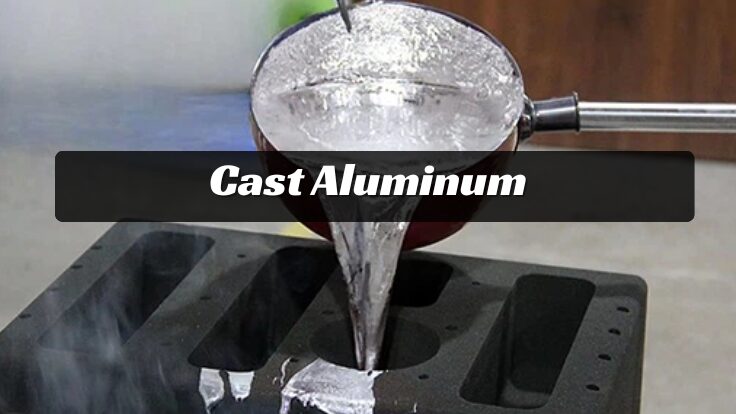
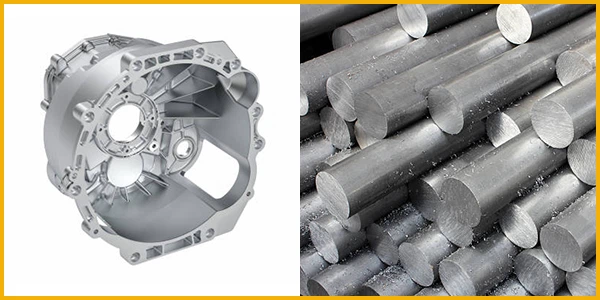
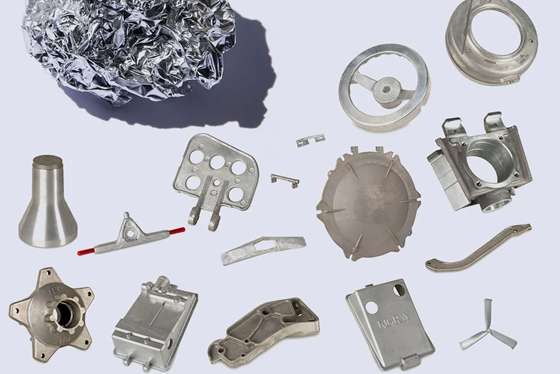
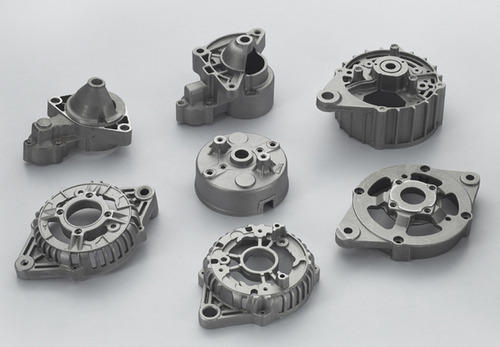


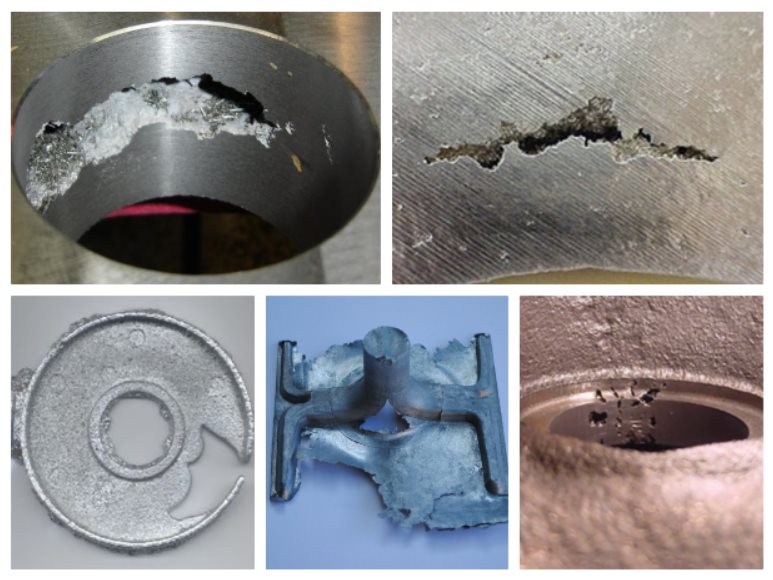
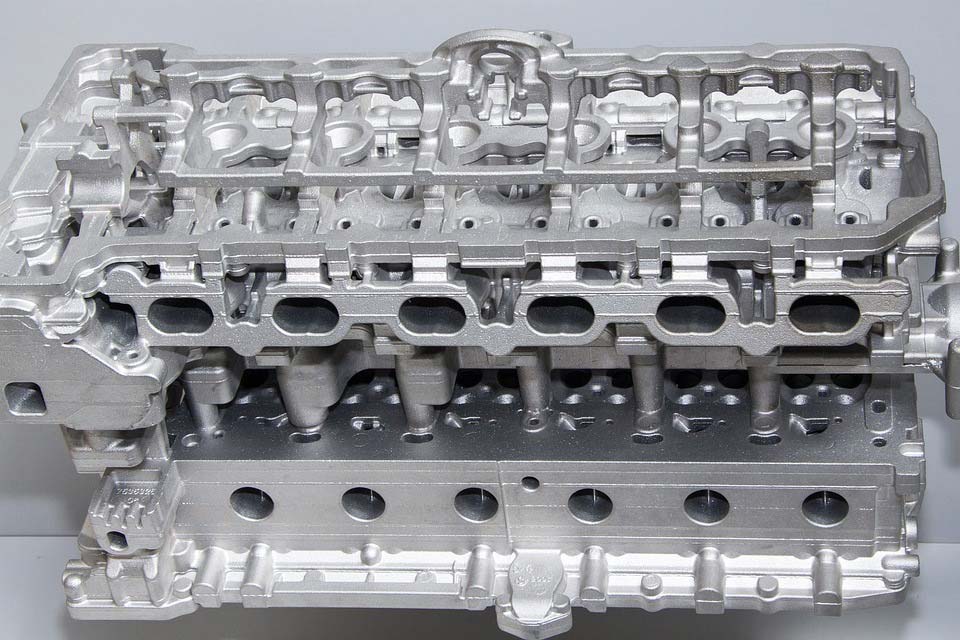
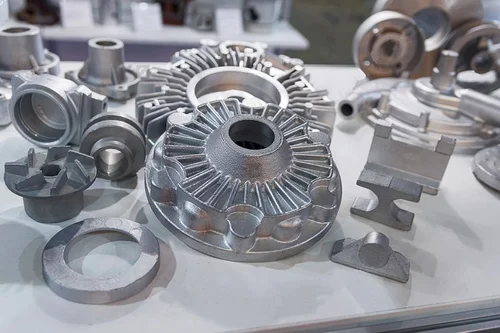
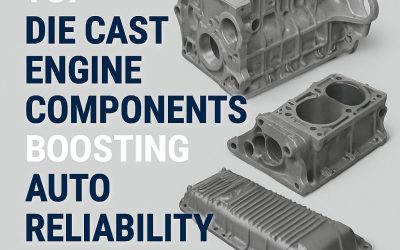

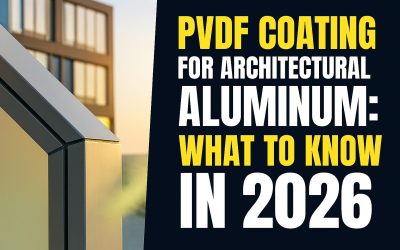
0 komentarzy